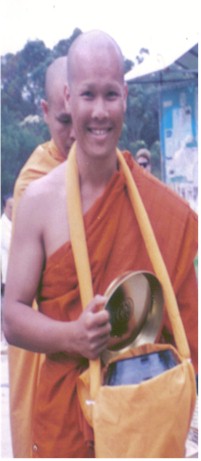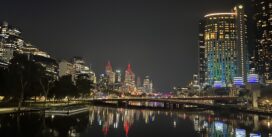PIMAY LAO

 You are invited to Lao ultimate party known as Pimay Laos – Lao New Year. This three days event fall on the 13th, 14th and 15th of April of every calendar year. So what do we at New Year’s Day?
You are invited to Lao ultimate party known as Pimay Laos – Lao New Year. This three days event fall on the 13th, 14th and 15th of April of every calendar year. So what do we at New Year’s Day?
Traditionally this is the time for spring cleansing. We cleanse house, clothes, bed, and everything else. Holy water is used to rinse bad spirit from body, mind and soul. Get rid off those bad omen and misfortune from the previous year. With pure spirit, mind and body combined with good blessing hopefully the coming next will be even proper and in good health.
As April is hot in Laos so it is refreshing to be doused with water that we also consider as cleansing or purifying element. We use water or performed water to cleanse Buddha images, after they offer alms to the monks and sprinkle of each other during our New Year festival. We believe that with our body clean and our spirit purified we can look forward to a Happy, Peaceful and Prosperous New Year.
Forgiveness is another important aspect of this great event. Son and daughter will pay homage to parents and elders and tie white strings around each other wrists to say “Happy New Year”.
Alms giving simple known as takbath are another daily ritual. Giving is a way of life for every Laotians. On New Year Day most people go to temple to takbath by giving food monk. Free live birds or fish is becoming very popular among temple goers.
Talking of food this is definitely a festive season therefore there are plenty of. This is also a time to catch with friends. Party is usually organised at home. But the mother of all parties is at temple. What sort of food do we eat at New Year’s Day? For many people, Larb is just simply another one of famous Lao dishes. Larb mean luck or fortune. Larb is a special dish. Yes, the more you have Larb the more you have good luck and fortune. Enjoys eating.
What about entertainment? This is the place where Laos harvest new generations of artists. There are stages for pop/rock, Lum Leung, Lumvomg, Morekhene. As for me I love enjoy dancing to traditional folk music suck as Kup toom, Kup Xiengkkuaong, Lum Putai, Lum Kornswan, Lum Salavan or Lum Syphandone. Have a prosperous New Year Every One.
Lao New Year, Why in April?
Why do we celebrate Lao New Year in April?
It is not easy to explain why some countries in South East Asia such as Burma, Cambodia, Lao, Thailand and even Sri Lanka, have chosen April the 13th as the beginning of their new years celebrations.
In Laos we celebrate new year for three days which fall on the 13th, 14th and 15th of April. According to Lao astrological calculations, the sun made a complete revolution around the earth about the 13th of April which we consider as the last day of the year (known as “Mur Sangkhane Pai or “Luang”), the 14th as the day between the old and new year ( known as “Mur Sangkhane Nao”) and the 15th as the new Year’s Day (Known as “Mur Sangkhane Khun”).
We perform different activities on each day, such as spring cleaning, wash our hair, build sand mounds, free live birds or fish on the first day of the festival. On the second day we visit friends or go to the temple to cleanse Buddha images. On the third day or New year’s Day, we offer food to the monks, listen to Buddha talk or sermon, eat a special dish called “LARB” to bring good luck, pay homage to our parents and elders and tie white strings around each other wrists to say “Happy New Year”. We also wish each other good health by sprinkling water on each other. However, young people sprinkle by the buckets! In Australia, many Lao-Australian still perform the activities mentioned.
Why de we build sand mounds?
It was believed that if we could repay our parents with gratitudes we would be very lucky. One way of showing this was to build sand mounds. By doing so, we would receive as much luck as many grains of sand.
It was also believed that if a married couple wished to have children they should build little mounds around the big one.
Why do tie white strings around the wrists?
The colour white of the strings is meant for purity. The strings are comparable to greeting cards which are commonly used in Western cultures with written, happy or sad messages within. Our wishes are formulated orally and vary depending on the occasion whilst we tie the strings around the wrists. We usually tie three knots and the strings are to be worn for three days in order for the wishes to be effective. The ceremony of tying the strings around the wrists is called the “Basi” or “ Soukhouane” ceremony which is performed on different occasions such as weddings, new Year, house blessings, birthdays and farewells.
Why do sprinkle water on each other?
As April is hot in Laos so it is refreshing to be doused with water which we also consider as cleansing or purifying element. We use water or performed water to cleanse Buddha images, to bless newly wed couples after they offer alms to the monks and sprinkle of each other during our New Year festival. We believe that with our body clean and our spirit purified we can look forward to a Happy, Peaceful and Prosperous new Year!
- Pimay La Keota by Baou Nhern Xaphouvong
- Sookji Pimay Laos by Thongvone Khunnara (lum)
- Sabiidee Pimay by Vanpheng Vongthongkham
- New Year’s Day Video by Ketsana + Crews
[Best_Wordpress_Gallery id=”60″ gal_title=”Prayortkeo”]
[Best_Wordpress_Gallery id=”61″ gal_title=”Buddhalavarn”]

